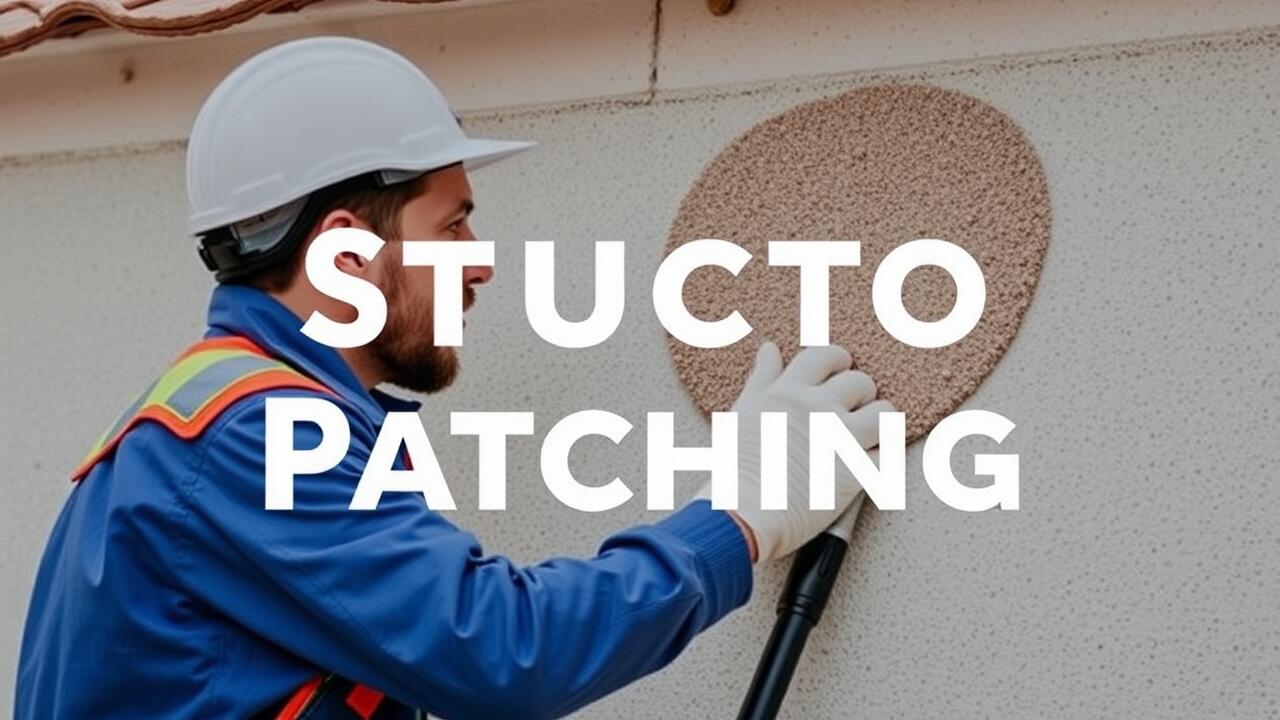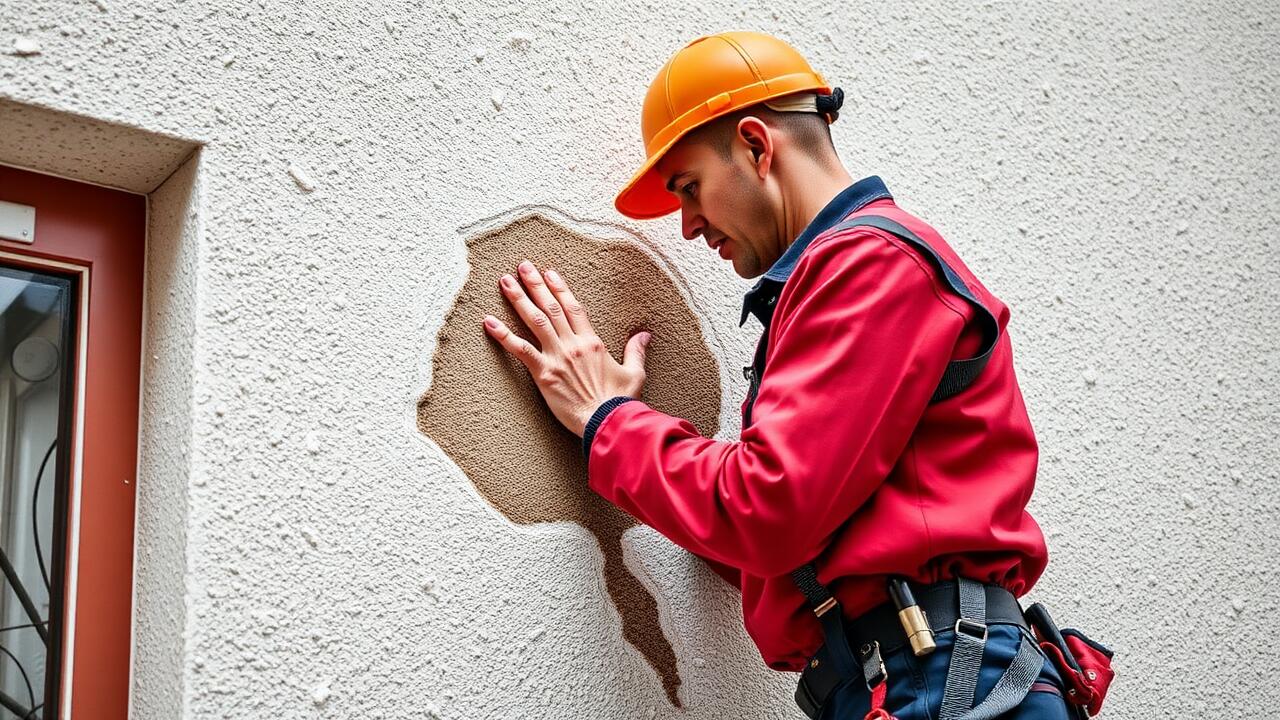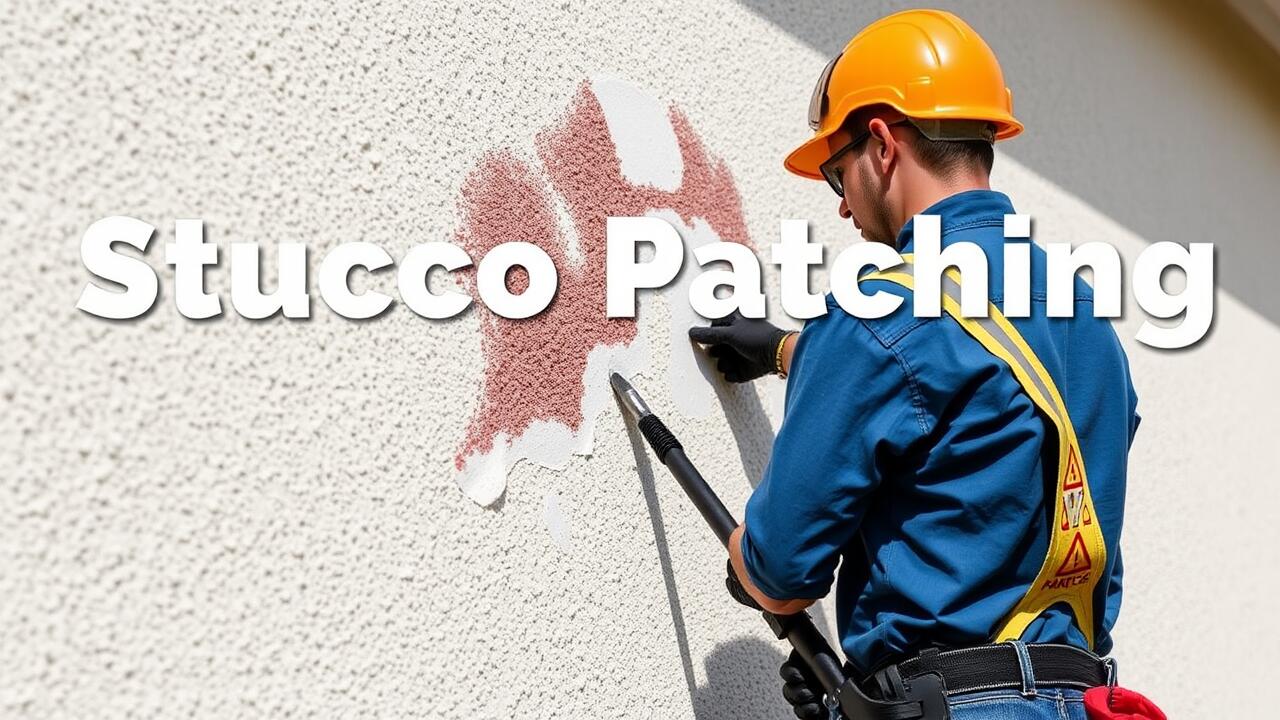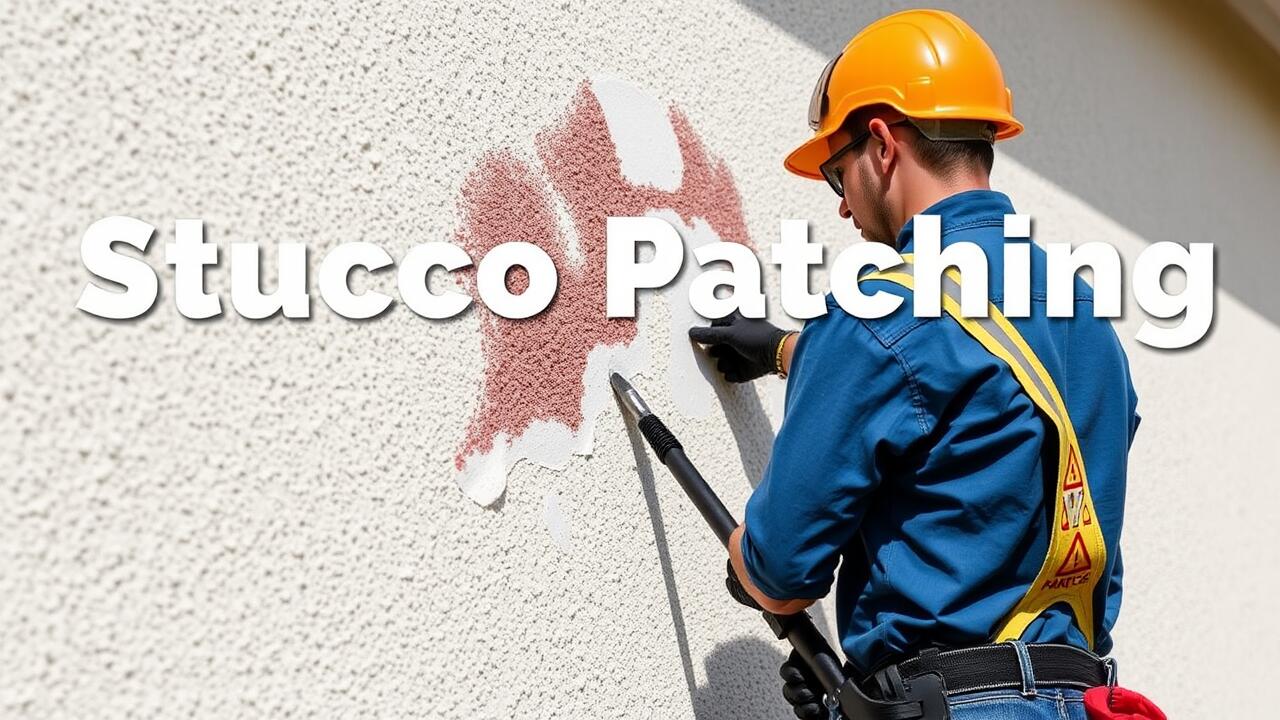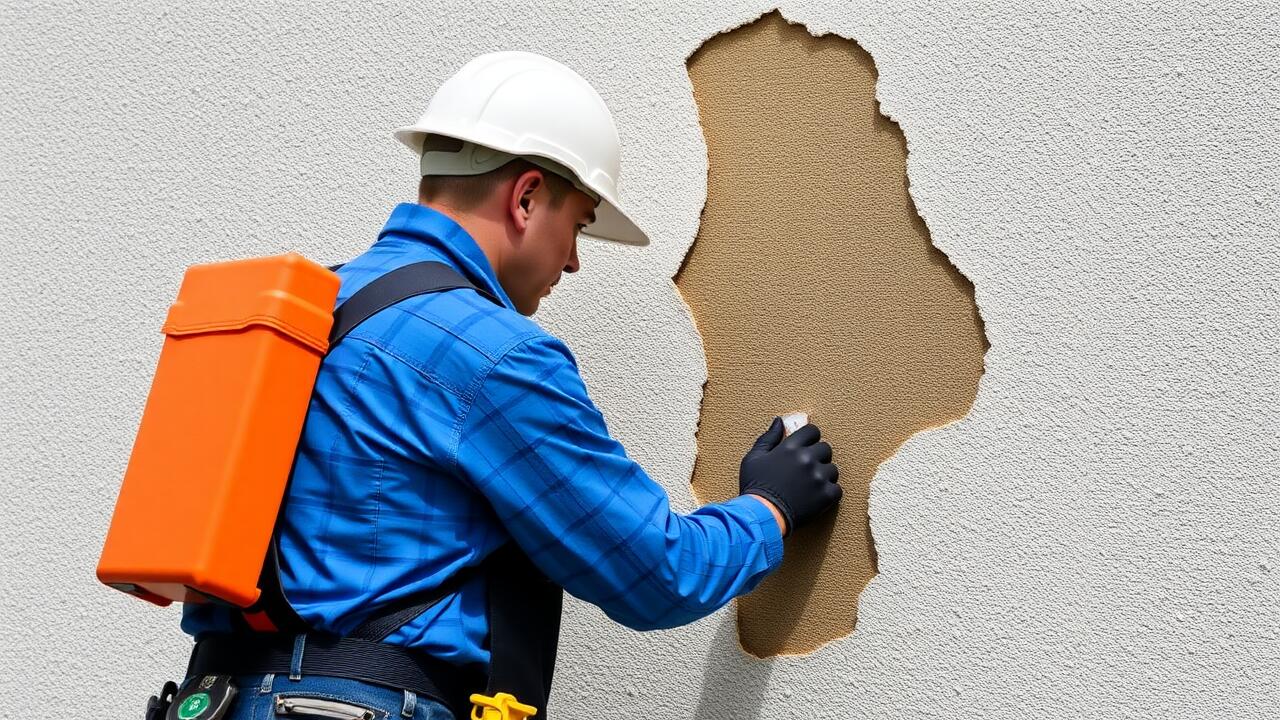
Timing and Drying
The timing of your brown coat application is crucial to achieving a professional finish. It’s essential to allow the underlying layer sufficient time to cure before proceeding with the brown coat. Factors such as temperature and humidity can significantly affect drying times. Warmer weather generally speeds up curing, while cooler or more humid conditions can prolong it. Always refer to the manufacturer's instructions for specific drying times, which can help you gauge when it is appropriate to apply additional coats.
Using the proper drying techniques can prevent potential issues later. Monitoring the environment where you’re working helps you catch any drastic changes. If you find the conditions less than ideal, consider delaying your application until they improve. In urban areas, searching for "Stucco Patching near me" can provide access to local professionals who can offer tailored advice based on your environment. Understanding the timing and drying process increases the likelihood of a flawless finish.
How Long to Wait Before Proceeding
After applying a brown coat of stucco, it is essential to allow adequate drying time before moving on to the next layer. Generally, a waiting period of at least 24 to 48 hours is recommended. This time frame can vary based on humidity, temperature, and the specific product being used. Monitoring the conditions closely ensures that the coat has cured properly, which is vital for achieving a solid finish.
While you may be eager to proceed, rushing the process can lead to significant issues down the line. Prematurely applying the next layer can trap moisture, resulting in problems such as cracking or delamination. If you need assistance during this process, searching for "Stucco Patching near me" can connect you with local professionals who can offer guidance and help ensure everything is done correctly.
Common Mistakes to Avoid
One common mistake when applying a brown coat is rushing the drying process. Insufficient drying time can lead to improper adhesion with subsequent layers, resulting in cracks and detachment. It’s crucial to follow the recommended waiting periods before moving on to the finish coat. Always monitor the conditions such as temperature and humidity, as these can significantly impact drying times. Consider consulting local services for “Stucco Patching near me” if issues arise during this phase.
Another mistake often encountered is the application of inconsistent thickness. Applying the brown coat too thick in some areas and too thin in others can create uneven surfaces and lead to various problems. A uniform application is key to achieving a smooth finish. Prior to starting the project, ensuring all materials and tools are prepared can help maintain consistency throughout the work. If complications occur, searching for “Stucco Patching near me” can provide assistance in correcting any finish flaws.
Pitfalls that Can Affect Your Finish
When applying a brown coat, several pitfalls can impact the overall finish. Insufficient mixing of materials can lead to uneven texture and inconsistent curing. It's essential to keep the mixture uniform, as this ensures optimal bonding and prevents weak spots that can later cause cracks or flaking. Rushing the application process can also be detrimental. Allowing each layer to dry adequately before applying the next helps achieve a strong, durable coat.
Another common mistake is neglecting to assess the surface before applying a brown coat. Issues with moisture can lead to problems down the line. If the underlying structure is damp, it creates an environment for mold and degradation. Always inspect the area for issues before starting the project. For those looking for professional help, searching for "Stucco Patching near me" can connect you with experts who can assess and remedy any surface problems efficiently.
Assessing the Finish
Once the brown coat has been applied and sufficiently cured, it is essential to assess the finish for any imperfections. Inspect the surface for uneven texture, pockmarks, or areas where the coat may have been applied too thickly or too thinly. Using your hands, feel for rough spots and evaluate the overall smoothness. The goal is to achieve a uniform surface that will enhance the final appearance of the stucco. If any flaws are detected, it may be necessary to perform repairs or adjustments before moving on to the next coating.
Additionally, if issues arise that are beyond simple fixes, seeking professional assistance can be beneficial. Searching for "Stucco Patching near me" can connect you with local experts who have the tools and experience to address more significant problems. Proper evaluation at this stage will save time and resources, ensuring that the subsequent layers adhere well and provide the desired finish.
How to Identify Flaws in the Brown Coat
To identify flaws in your brown coat, it’s essential to conduct a thorough inspection once the application has dried. Look for inconsistencies in texture, which can manifest as rough spots or areas that appear too smooth. Discoloration is another common issue that can arise, caused by improper mixing of materials or uneven curing. Small cracks or hairline fissures may also indicate that the coat has not bonded properly to the substrate beneath. Addressing these flaws early on can prevent bigger problems down the line.
If you notice significant imperfections, consider consulting a professional for stucco patching near me. An expert can assess any issues more critically and provide appropriate solutions. Checking for proper adhesion and ensuring the coat is uniform in thickness can aid in evaluating the overall quality of the application. Regular visual assessments during the drying period can help catch flaws before the final finish is applied, saving time and resources in the process.
FAQS
What is a brown coat in plastering?
A brown coat is a layer of plaster that is applied over a scratch coat to provide a strong, durable surface for finishing. It helps to create a level base for the final coat of plaster.
How long should I wait for the brown coat to dry before applying the finish coat?
Typically, you should wait at least 48 to 72 hours for the brown coat to dry completely before proceeding with the finish coat, depending on humidity and temperature conditions.
What are some common mistakes to avoid when applying a brown coat?
Common mistakes include applying the brown coat too thickly, not allowing sufficient drying time, and failing to properly mix the plaster, which can lead to cracks or an uneven surface.
How can I tell if my brown coat has flaws?
You can identify flaws in the brown coat by visually inspecting the surface for cracks, unevenness, or pockmarks. You can also run your hand over the surface to feel for any irregularities.
What should I do if I notice flaws in my brown coat?
If you notice flaws in your brown coat, you can repair them by adding a thin layer of plaster to fill in any cracks or uneven areas. Ensure that the surface is clean and prepped before applying any additional plaster.
